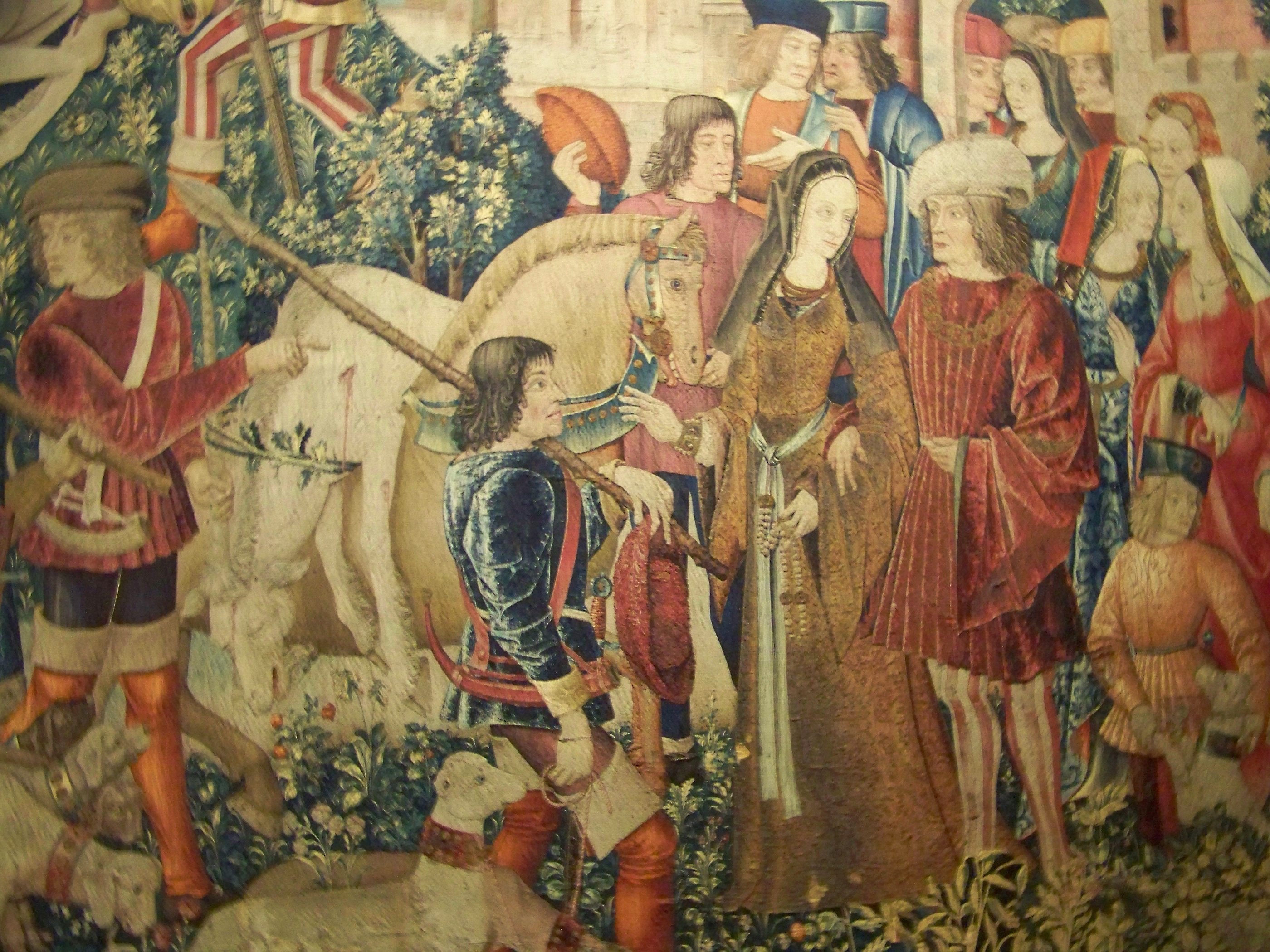
My son says that when he lived in New York several years ago I told him I wanted to see the Cloisters when I visited him. I don’t remember that conversation, though he has a better memory than I do. In any event, we did not make it to the Cloisters when he lived there before, so he arranged to take us when we visited him earlier this month.
The Cloisters is a a branch of the Metropolitan Museum of Art. It sits on a bluff above the Hudson River at the northern tip of Manhattan Island. On the day we went, it was cold and windy—not the most auspicious day for a visit. But once we reached the top of the hill and entered the museum, it was lovely.
The Cloisters contains many artifacts from MOMA’s medieval collection. The building was constructed in the 1930s, but it incorporates many pieces of European monasteries and abbeys into its walls and doorways. It looks like a medieval church perched on the top of the hill.
The museum impressed me because the original medieval arches and columns fit so well within the modern building. I felt like I was in a 13th century monastery, and I wanted to whisper as I passed through the hallways and in front of altars and chapels that pre-dated the Reformation. Piece after piece was displayed with a notice indicating it was created in the 12th century, and almost everything was older than the 16th century.
I sat in an indoor hall (a cloister, in fact) and looked outside at a garden displaying early signs of spring. I imagined French nuns or monks doing the same thing beside these same stones 700 years before me.
Much of the collection of medieval art in the museum came from John Rockefeller’s collection. Rockefeller also acquired the land for Fort Tyron Park in which the museum sits. I am not usually a fan of medieval religious art, but I felt awed by the altar carvings, gold chalices and reliquaries, paintings, statues, and other objects of devotion. Sculptors and metalworkers, painters and woodworkers all expressed their devotion to the divine in pieces that have survived for centuries.
These artifacts have seen the schismatic split of the Christian church into many sects. They have outlasted their creators by generations. They have endured burial, hiding, and relocation from one continent to another. Now, those of us who visit the Cloisters can meditate on the faith that both inspired their original creation and motivated their keepers to keep them safe throughout the centuries. Even if one does not believe in the faith that led to the manufacture of these pieces, the art awes us, because so many have believed and have preserved these works.

The museum also features Flemish tapestries from about 1500 called “The Hunt of the Unicorn.” This series of wall coverings depicts the poor mythical creature as it is hunted, captured, and slaughtered. Needlework of this magnitude always impresses me, because I know how much effort goes into creating even a small piece.
There was also a special exhibit of 15th century playing cards. I enjoyed imagining people playing with these decks in a time before the four suits were standardized. (“I bid you two falcons.” “I raise you three bears.”)
Tired after our visit, we stopped at the New Leaf Restaurant for drinks and appetizers. We warmed our insides as the museum had warmed our spirits. Then we traipsed down the hill to the subway and rode back to Brooklyn and the 21st century.
The tagline on this blog is “One writer’s journey through life and time.” I have journeyed through time quite a bit this month as I have focused on the historical significance of places I’ve been and items I’ve read. My life proceeds from day to day, year to year, but as it does, I encounter objects from the past that cause me to reflect on my place in history. I also think about how those who have gone before me have left a legacy as they passed through time. The Cloisters was one of those times of reflection.
When has the legacy of the past struck home with you?




My daughter lives in NYC, and I keep telling her to go there, but of course she is always busy. Thanks for the reminder.
This sounds like a great museum, Theresa. That’s one thing that I miss about not living in the suburbs of Washington, D.C…having so many great museums in your backyard.
I love the Cloisters, Theresa! Have only toured it one time, but I loved the experience. Such a great city, and this is the second blog post today that features something there. Need to go there again as soon. Glad you had a nice time!